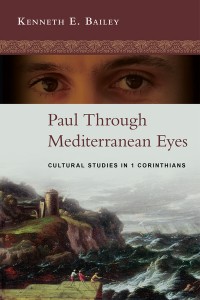 Kenneth Bailey on how Christians in the Middle East have understood the Aramaic word maran atha:
Kenneth Bailey on how Christians in the Middle East have understood the Aramaic word maran atha:
As often observed, this last word can be read maran atha (our Lord has come). This translation addresses the readers and affirms a reality in the present (he is here).
The two Aramaic words can also be divided to read marana tha (Our Lord-come!). This is a request addressed to the risen Lord that looks to the end of all things with the plea “Please come!”
A variant on this second option is, “Our Lord is coming.” This also looks to the future but it is a statement of fact rather than a plea, and it is not addressed to Jesus.
All three options are linguistically possible, and all three fit Paul’s theology. The only other occurrence of the Aramaic maran atha is in an early Christian document called the Didache (“The Teaching”), where it appears in a chapter on the eucharist (Didache 10:6). Some have seen a relationship between maranatha and the Greek of Revelation 22:20, “Amen, come, Lord Jesus!” What can be said?
Many contemporary scholars have granted the validity of the two major options (present and future) and have opted for the future. Some have granted that the word atha is a past that reads “has come” and have rejected this option as reflecting ideas that Paul could not have intended.
However the past tense (has come) was preferred by the early fathers of the church. John Chrysostom wrote, “But what does ‘Maranatha’ mean? Our Lord has come. Why does Paul say this? To confirm what he has said about God’s plan for salvation, which is particularly evident in his discussion of the seeds of resurrection (15:1-58).”
Over the last fifteen hundred years Chrysostom’s interpretations of Scripture have been highly regarded across the Middle East, and they continue to impact the church there. Furthermore, Syriac, Arabic and Hebrew translations have consistently read maranatha as maran atha and translated it “our Lord has come.” The Syriac Peshitta is particularly important, and its witness cannot be easily dismissed. Syriac is a sister language to Aramaic, and the roots of the Syriac Peshitta are very early. Some of the early Arabic versions leave the two Aramaic words in the text and divide them like the Syriac, meaning “Our Lord has come.” Others have translated the two words into Arabic or written the Aramaic and then added an Arabic translation that reads, “Our Lord has come.”
Among the twenty-three Semitic versions examined, there is no break in this tradition until the nineteenth century, when two individual efforts (one in India and the other in Lebanon) read the text as “Our Lord is coming.” Finally, two late-twentieth-century versions allow for “Our Lord-Come” as a marginal note, and the most recent version (1993) places this option in the text. Matthew Black argued that the phrase was popular because of its “ambiguity and hence flexibility: it could be fitted into different contexts, in the Eucharist, as an imprecation, or as a confession (‘The Lord has come’). When all is said and done, for at least sixteen hundred years Middle Eastern churches have read this cry as a confession. Surely that option deserves serious consideration.
– from Paul Through Mediterranean Eyes: Cultural Studies in 1 Corinthians


















